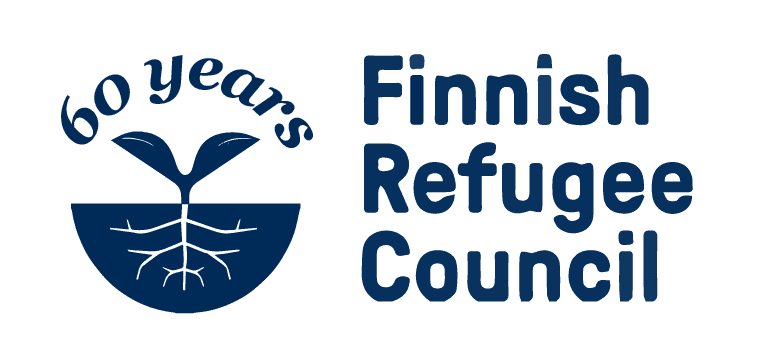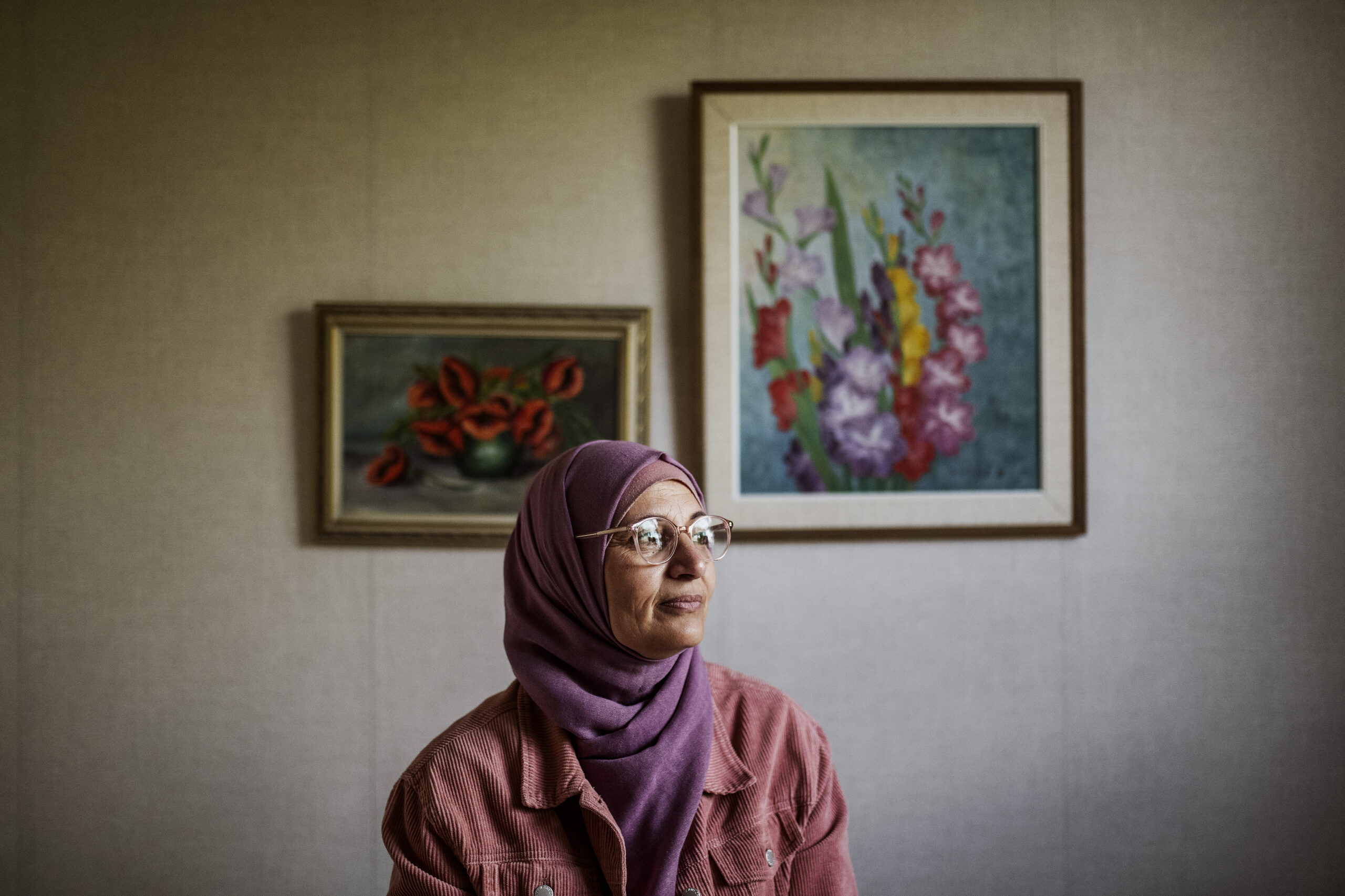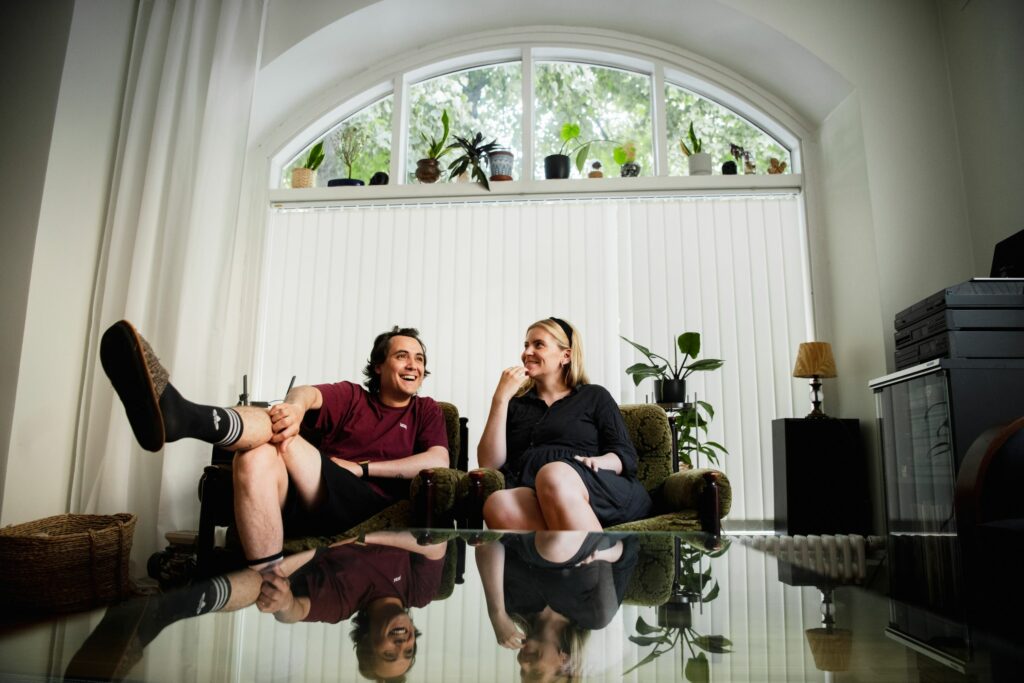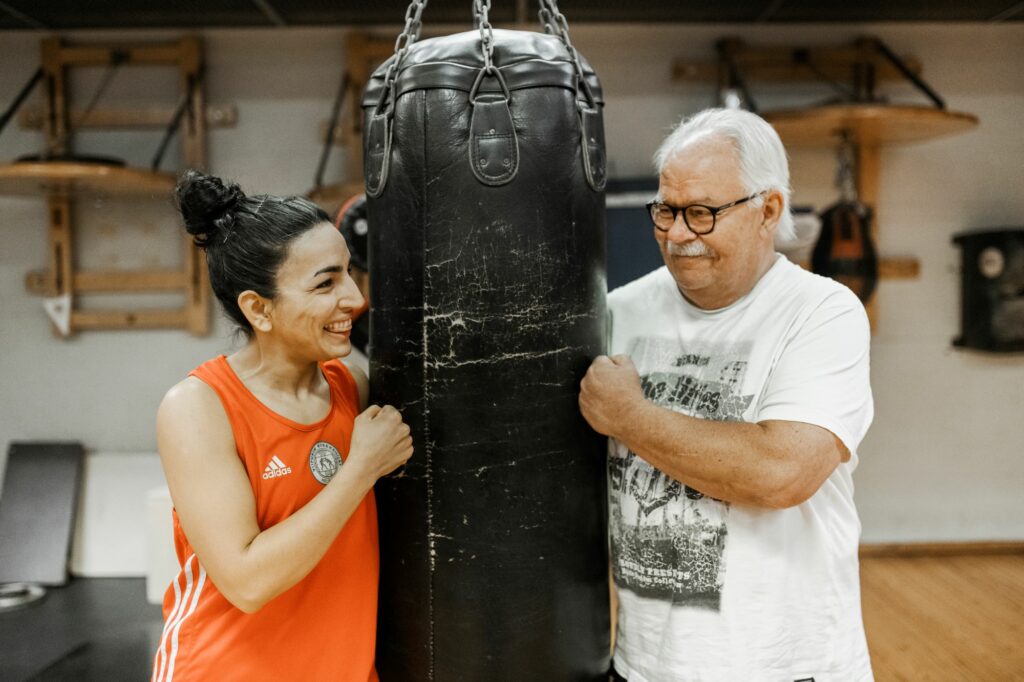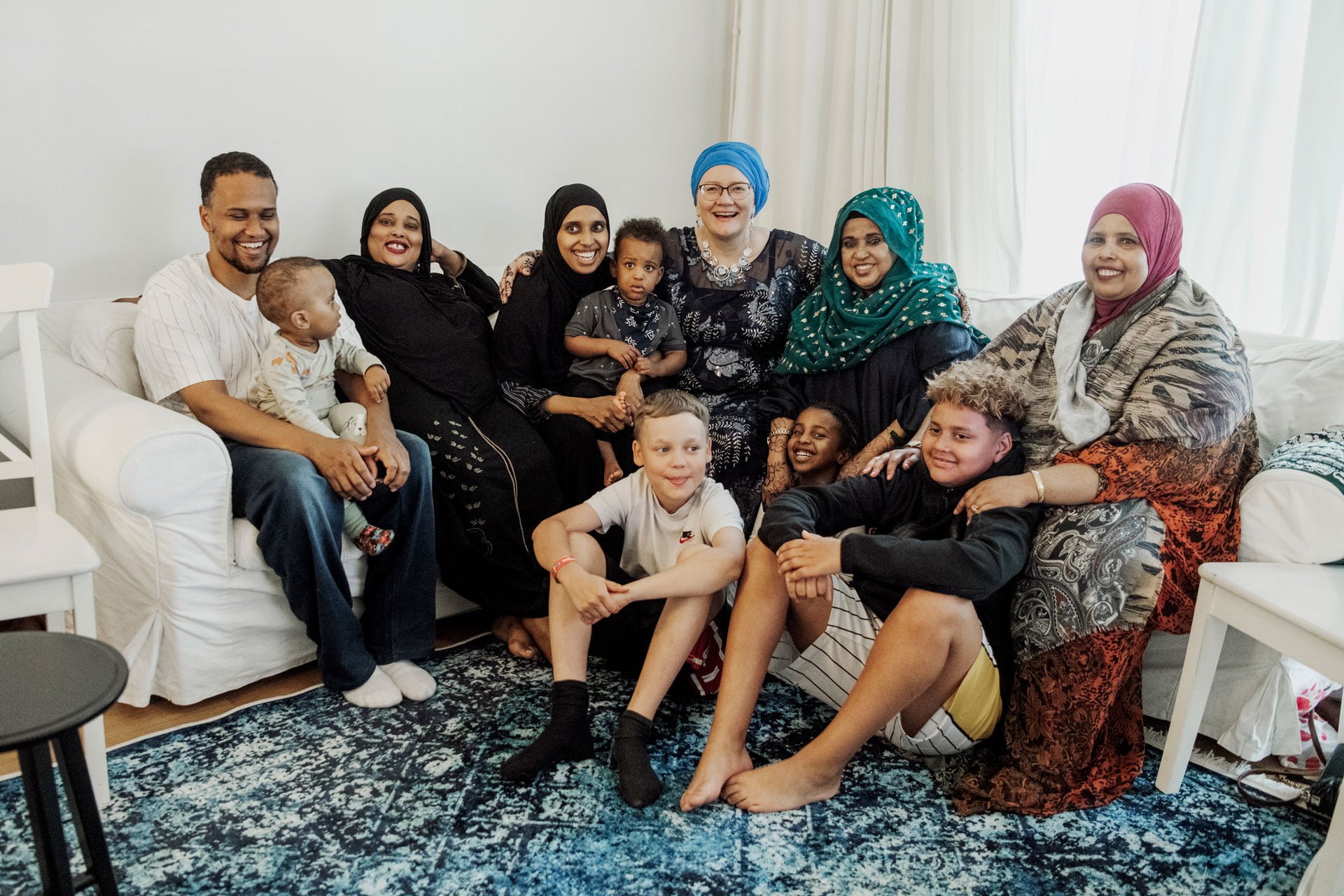Stories behind immigration
Do we see the individuals behind the immigration statistics? Why is the public debate on immigration often sensationalist and focused on highlighting potential threats? Why are the everyday dimensions of immigration and integration not given equal space in the mainstream media? What happens after arriving in Finland, and what makes the new country feel like home?
The Whole Picture – stories behind immigration project addresses these questions in a gentle and approachable way. In the summer and autumn of 2022, photographer Julius Töyrylä and Marjukka Koskenkorva from Finnish Refugee Council, travelled around Finland interviewing and photographing people of different ages, from different countries and who have migrated to Finland for different reasons; some have come to study, some as through resettlement to escape the horrors of war and persecution, and some in search of love. The project will focus on humane stories and the encounters and relationships that have been important to the interviewees and have supported their integration. Community, friendship, and finding one’s place are universal needs that unite people regardless of their background.
“A community is like a human body: one person is its brain, another its eyes, another its ears, another its legs, and so on. This way we form a functional entity, and together we can open the doors of society.”
– Intisar Mushaileh, The Whole Picture -project, 2022.
An important part of the project is a photographic exhibition built around six different stories, in which the photographs and written stories based on personal interviews come together forming a cohesive collection. The exhibition and a wider online campaign also explore the global scale of immigration and forced migration, the diverse reasons for moving, and the situation in the countries of origin of the subjects of the stories based on statistics and data from UNHCR. The exhibition will be on display in various locations around Finland during 2023-2024.
IN 2024 THE PHOTO EXHIBITION WILL BE OPEN TO THE PUBLIC:
3.12.–20.12.2024 Espoo Cultural Centre, Kulttuuriaukio 2, Espoo. Admission is free during opening hours.
19.3.– 4.4.2024 Artspace Terra, Keskusaukio 2, Kangasala. Admission is free during opening hours.
Past exhibitions:
- 11.1.–26.2.2023 cultural centre Stoa, Turunlinnantie 1, Helsinki. Admission is free during Stoa’s opening hours. Read more here.
- 21.3.–5.4.2023 Karhula Parish Centre, Karhulantie 33, Kotka.
- 20.6.–16.7.2023 Rovaniemi City Library, Jorma Eton tie 6, Rovaniemi.
Julius Töyrylä (born 1989) works with documentary and subjective photography and has been active in the field of art since graduating from the Turku Academy of Fine Arts in 2018. What is important to him in photography is the authenticity of events and subtle language of expression. Töyrylä has also studied photography at the Adult Education Centre of Lahti and Pekka Halonen Academy, graduating as a photo-artisan.
Finnish Refugee Council is Finland’s largest expert organisation specialising in the issues of displacement and migration. Each year, we support thousands of people in recovering from conflicts and integrating into new societies. For over 50 years our work has positively impacted lives in Finland, Africa, the Middle East, Asia, and Europe. Finnish Refugee Council is the official communication and liaison partner of the United Nations High Commissioner for Refugees (UNHCR) in Finland.
DISCOVER THE STORIES
ARCTIC IMMIGRANTS – STORY OF AMA
READ THE STORY OF AMA
RAYMUNDO & ANNIINA – LOVE FLEW ONE NORTH
Raymundo Deppe from Chile and Anniina Lius from Finland met each other when Anniina had only two months left of her student exchange period in Santiago, the capital of Chile. They agreed they would spend this time together and see where it would take them. When it was time for Anniina to return to Finland, the decision was clear: neither wanted to let the other person go, so the only option was to find a way to stay together.
“Although there were many uncertainties, we decided that we were going to make this work. We wanted to find out what the future would bring.”
READ THE STORY OF RAYMUNDO & ANNIINA
YVAPURÜ STUDIO – A MEETING PLACE FOR ARTIST
Behind a wooden door, there is a dimly light, atmospheric studio, just one of the many different spaces in the building. The studio is full of interesting details: paintings, African masks, a piano with a framed photograph and some candles on top. A closer look reveals that there are three desks in the space, and each of them is surrounded by different kind of art.
This is Yvapurü Studio, shared by artists Yvapurü Samaniego, Aryan Vandi and Miguel Diaz.
READ THE STORY OF YVAPURÜ STUDIO
RISTO & FATMA – LIKE A FATHER AND DAUGHTER OF THE BOXING GYM
“If I were to come into this world a second time, I would still choose boxing,” Fatma Hajizadeh says, her eyes alight with excitement. She is a Finnish boxing champion, who is originally from Afghanistan.
Fatma arrived from Turkey to Finland with her family through the resettlement system in 2005. Soon Fatma’s day-to-day was busy with Finnish-language studies, followed by which she graduated as a practical nurse and later as a nurse. Also Fatma’s core passion – boxing – has been part of her life for many years.
READ THE STORY OF RISTO & FATMA
FINNISH-SOMALI FAMILY COMMUNITY – CARING THROUGH DANCE AND LAUGHTER
“The Somali concept of family? Your family is a community that includes all your relatives: grandparents, cousins, second cousins, even your neighbours and acquaintances!”
This description was given by Tuula Mohamud, who has been part of a Finnish-Somali family for three decades now. Tuula knows what she is talking about: while spending the afternoon in her home in East Helsinki, we too feel part of this community. The living room is filled with music and a lovely scent of food.
READ THE STORY OF THE FAMILY COMMUNITY
ZAHRA & MERVI – FRIENDSHIP WITHOUT A COMMON LANGUAGE
It is a winter evening in Pieksämäki in November 2015. A mother, father and two children arrive at the reception centre where warm showers and made beds are waiting for them. They soon collapse in their respective beds having endured a journey that took more than two months. Finally, they are safe and can rest.
The next morning, as Finnish Red Cross volunteer Mervi is preparing breakfast for reception centre residents, she notices tiny hands reaching onto the kitchen table. Mervi will later find out that the youngsters, Fatemeh and Mohammed Javad, are the children of Zahra, a new friend she is about to make.
READ THE STORY OF ZAHRA & MERVI
DID YOU KNOW THIS ABOUT MIGRATION?
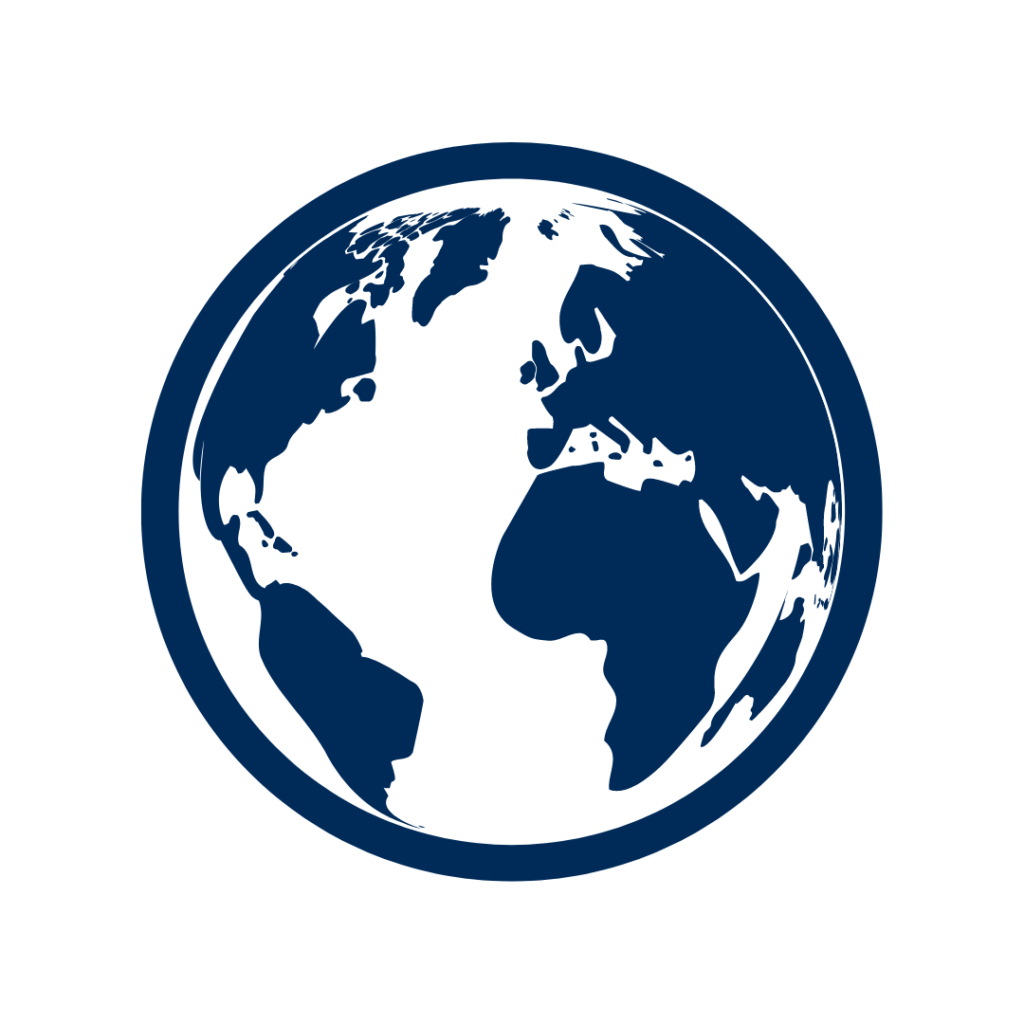
There are more than 281 million migrants in the world. This number includes both voluntary migrants and forced migration. Migrants make up 3.6% of the world’s population. Countries of the largest populations of migrants are United States (50.6 million), Germany (15.8 million) and Saudi Arabia (13.5 million).
Forced migration is a shocking trend that unfortunately is not about to be reversed. On the contrary, the number of people fleeing has even doubled in just ten years. In particular, prolonged conflicts and reasons linked to the climate crisis are forcing people to leave their homes. Disasters related to climate and the environment are already the main cause of internal displacement.
There are over 100 million displaced people in the world. More than half of them is living as internally displaced people within the borders of their own home country. The number of displacement and refugees are not evenly distributed between countries, with 83 percent of the world’s refugees living in the poorest countries. 72 percent of the refugees crossing state borders remain in neighboring countries. The longer the war or conflict lasts, the less likely it is that displaced people will be able to return to their home region.
Finland as a country of immigration
Until the 1980s, Finland was primarily a country of emigration. Better employment opportunities and the desire for a better life have driven Finns to emigrate especially to Sweden, Norway and the United States. Historically, the vast majority of immigrants in Finland have been returnees and their foreign-born descendants. Finland received the first refugees under the UNHCR mandate in 1973-1979 from Chile and Vietnam.
Today, around 37 000 people move to Finland every year. The main reasons for immigration are family relations, studies and work. Foreigners account for around 8.5 % of the Finnish population. As many as 75 % of those with a foreign background are of working age. There is also a high proportion of refugee children living in Finland.
For more information on the situation and migration in the countries interviewed for the campaign, see the personal stories.
Sources: IOM World Migration Report 2022, UNHCR Global Trends 2021 Report & EMN Annual Report on Migration and Asylum Finland 2021 Report.

